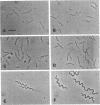Abstract
Enumeration by means of light microscopy showed that from 0.4 x 10(8) to 2.0 x 10(8) spirochetes were present per ml of bovine rumen fluid. Viable cell counts yielded slightly lower values, ranging from 0.1 x 10(8) to 1.2 x 10(8) spirochetes per ml of rumen fluid. The antibiotic rifampin, which served as a selective agent for rumen spirochetes, was added to agar media used in the estimation of viable spirochete numbers in rumen fluid. Morphologically diverse spirochetes were isolated from rumen fluid by means of a procedure involving the use of rifampin as a selective agent in agar media. The strains isolated represented seven morphological types of spirochetes differing in cell size, cell coiling pattern, and number of periplasmic fibrils per cell. Electron microscopy showed that the number of periplasmic fibrils present in the different morphological types of rumen spirochetes ranged from 2 to more than 20 per cell. The results of this study indicate that the bovine rumen is a highly favorable environment for a number of morphologically diverse spirochetes.
Full text
PDF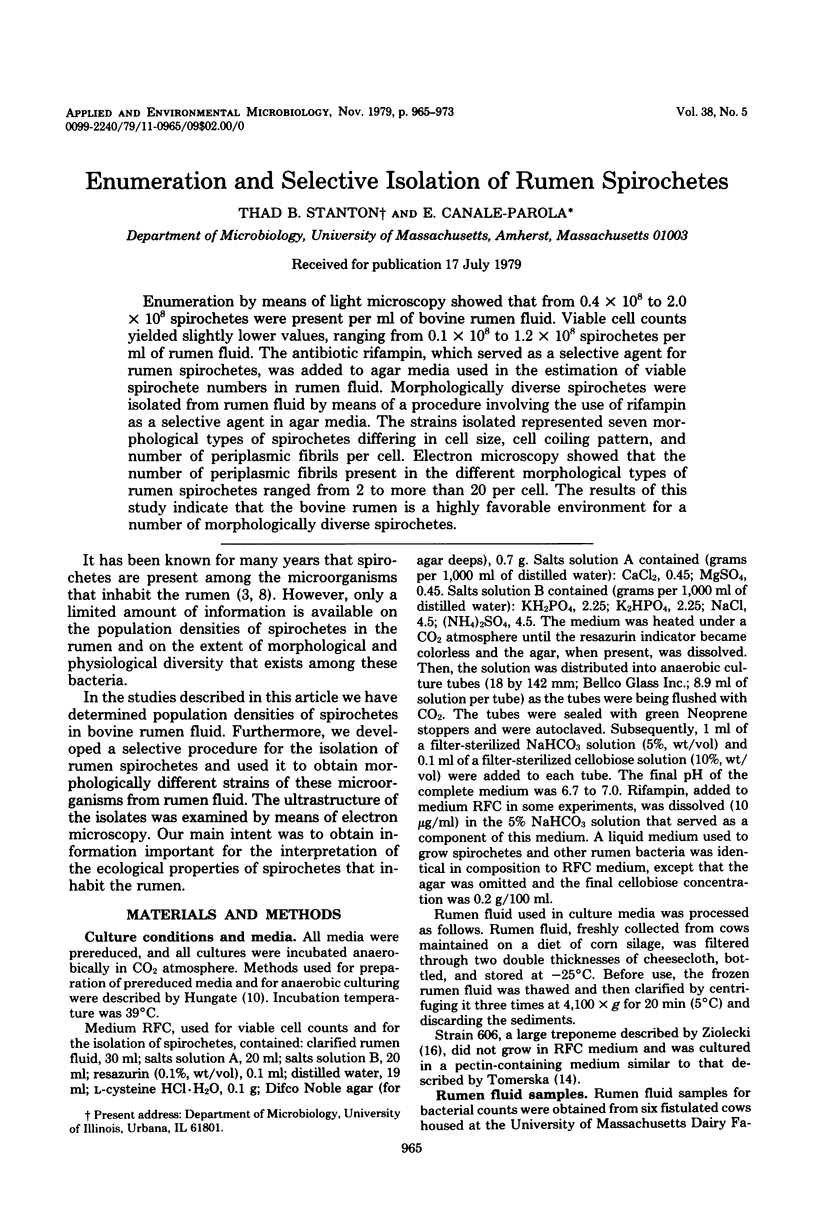
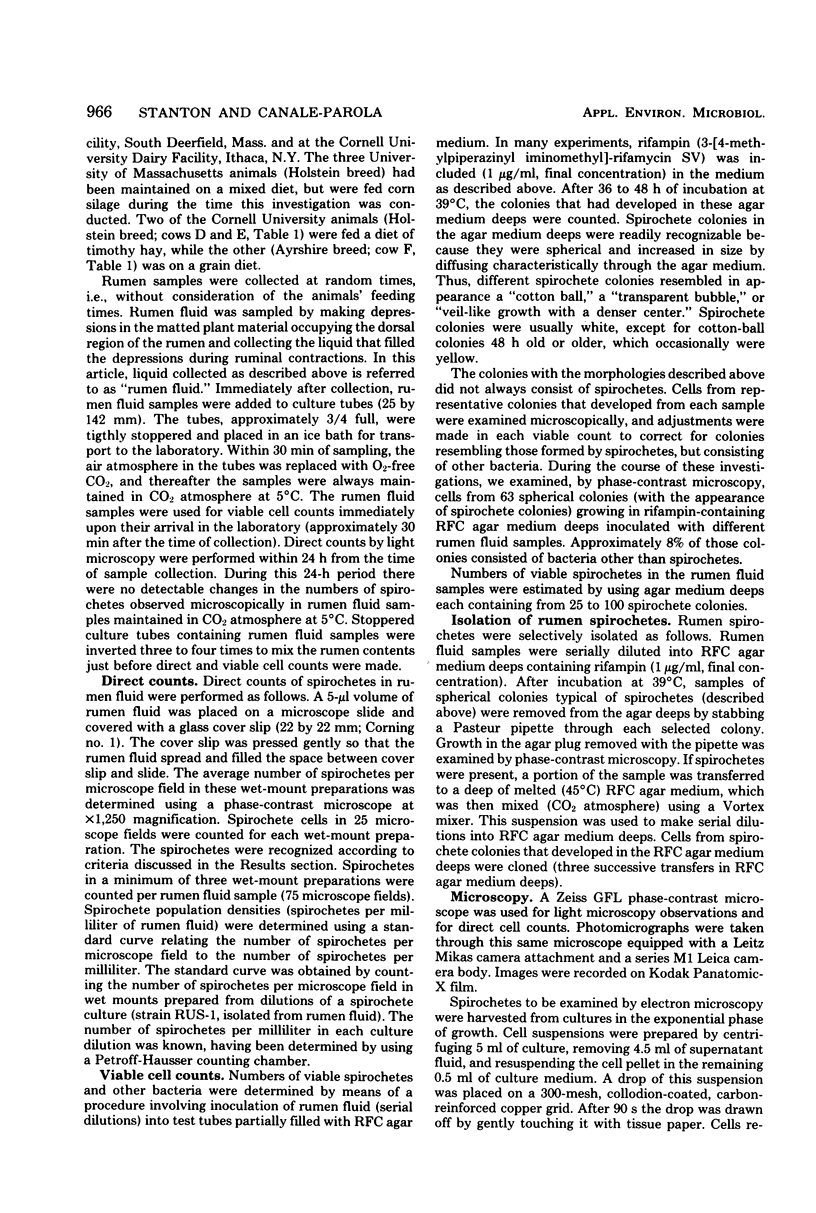
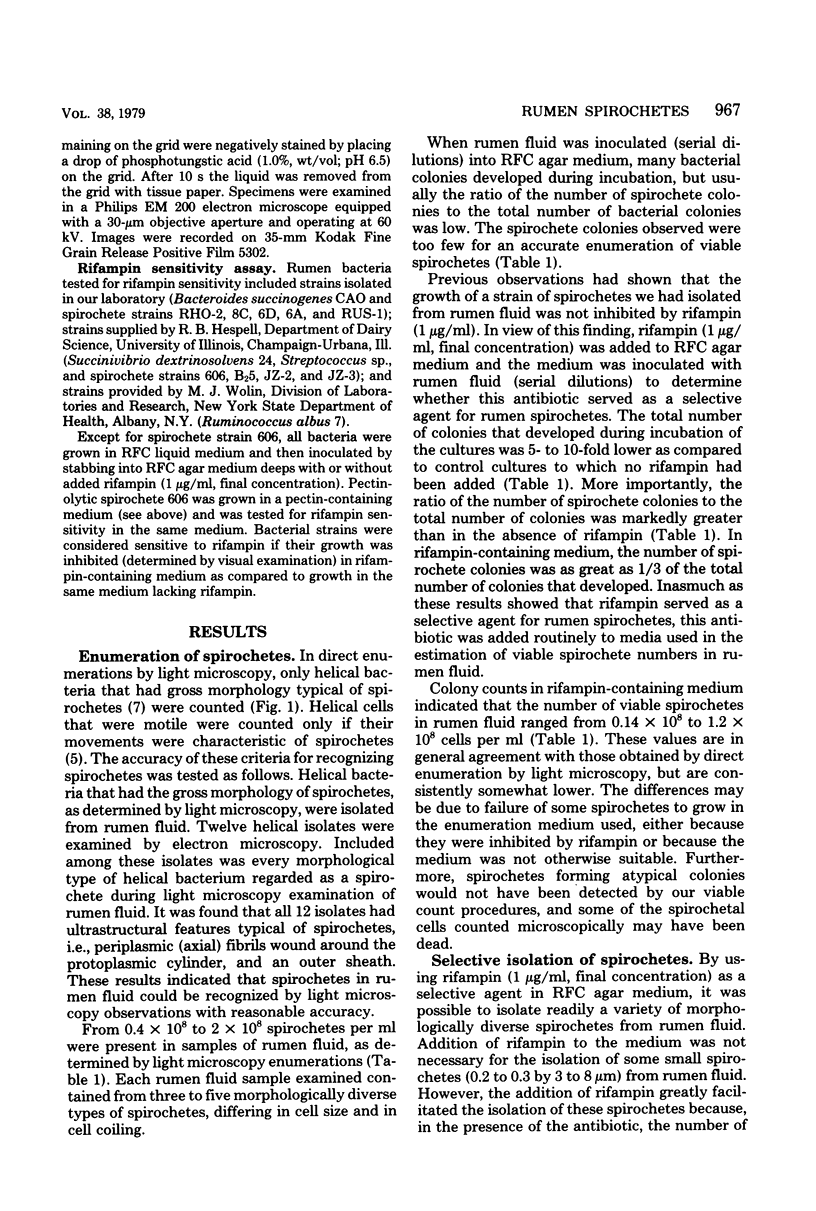
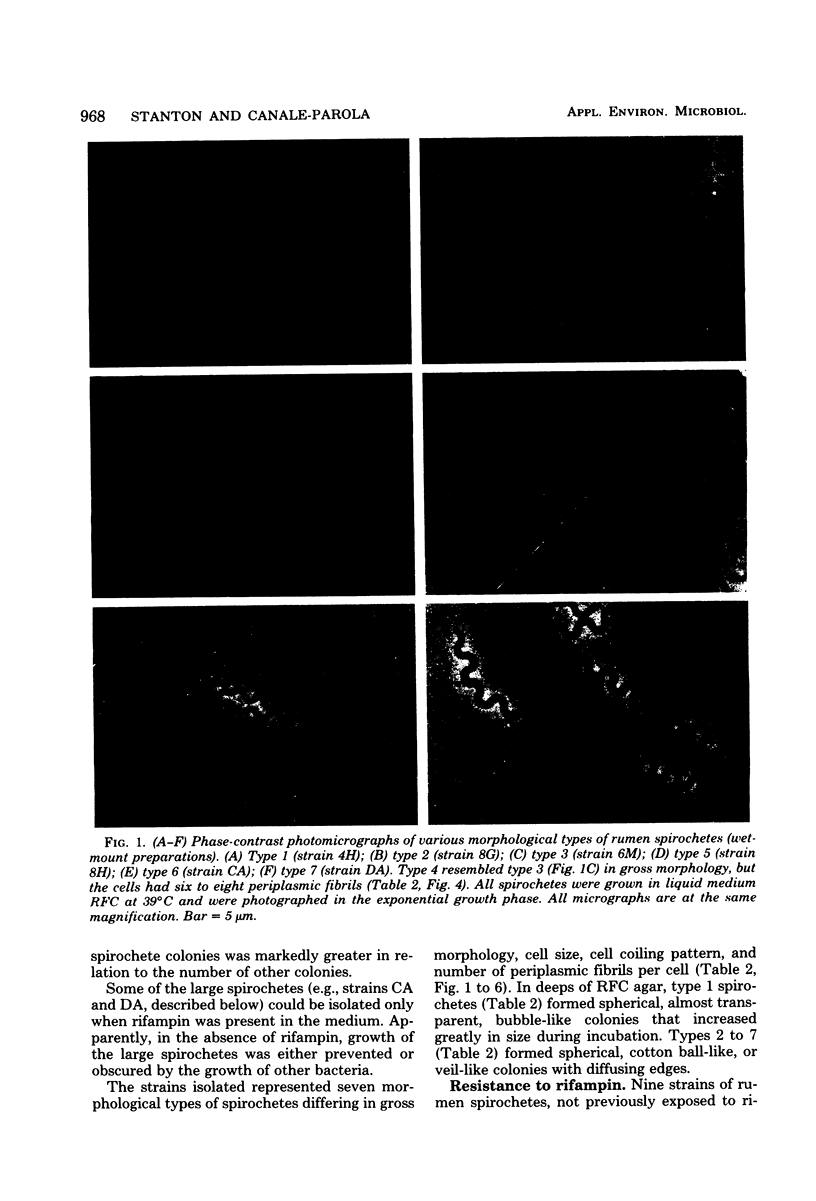
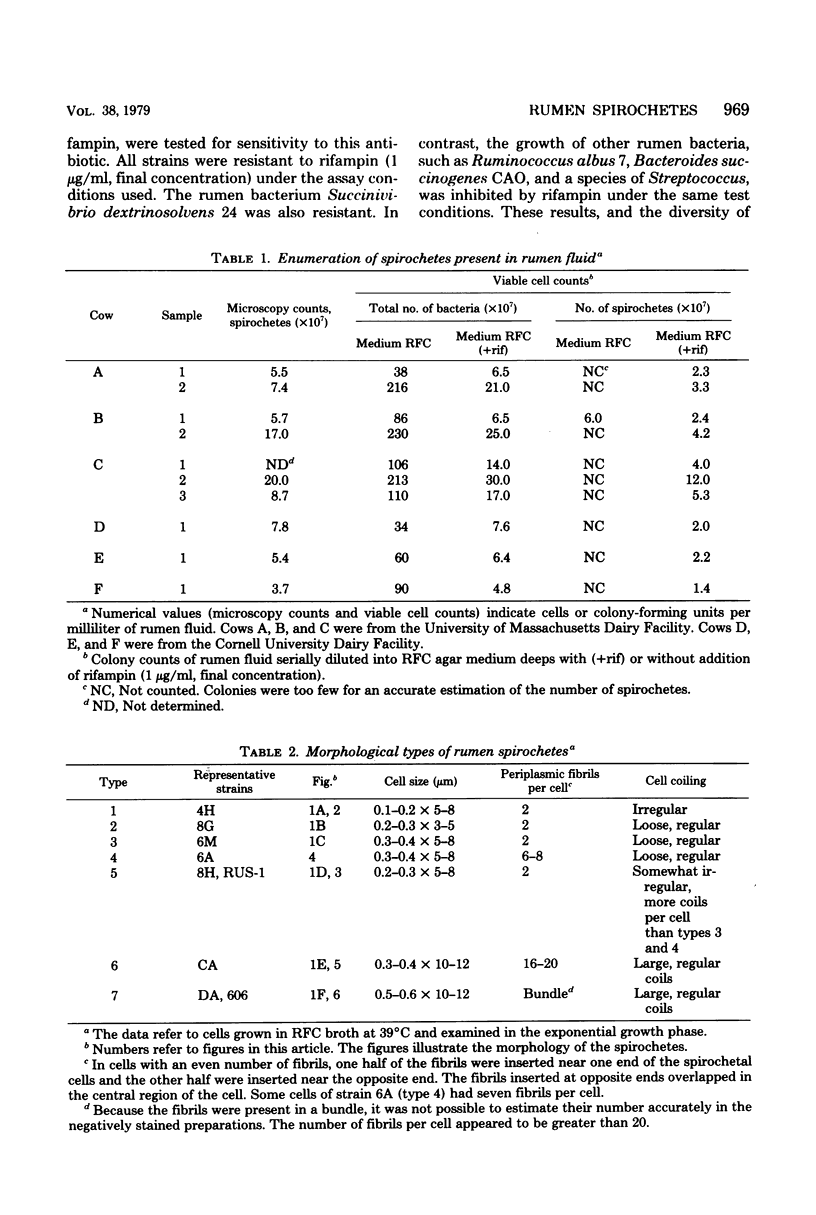
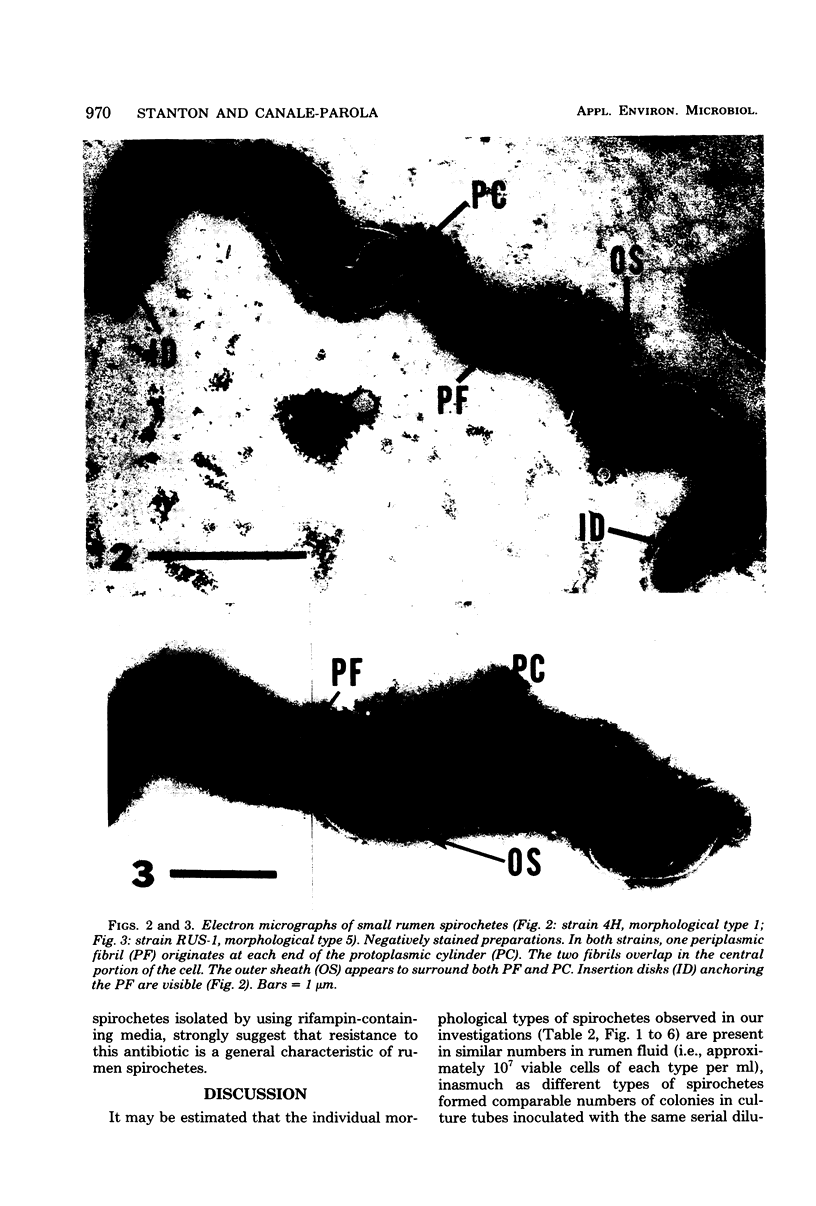
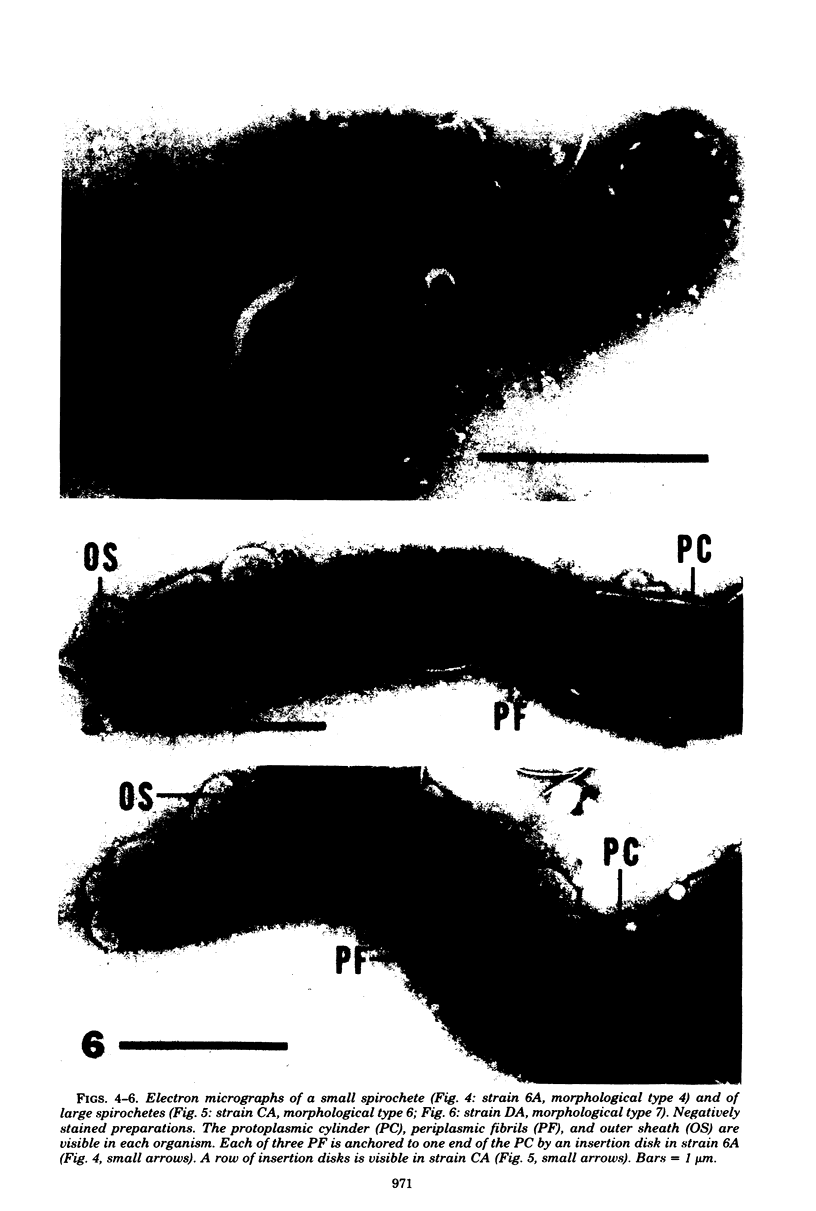
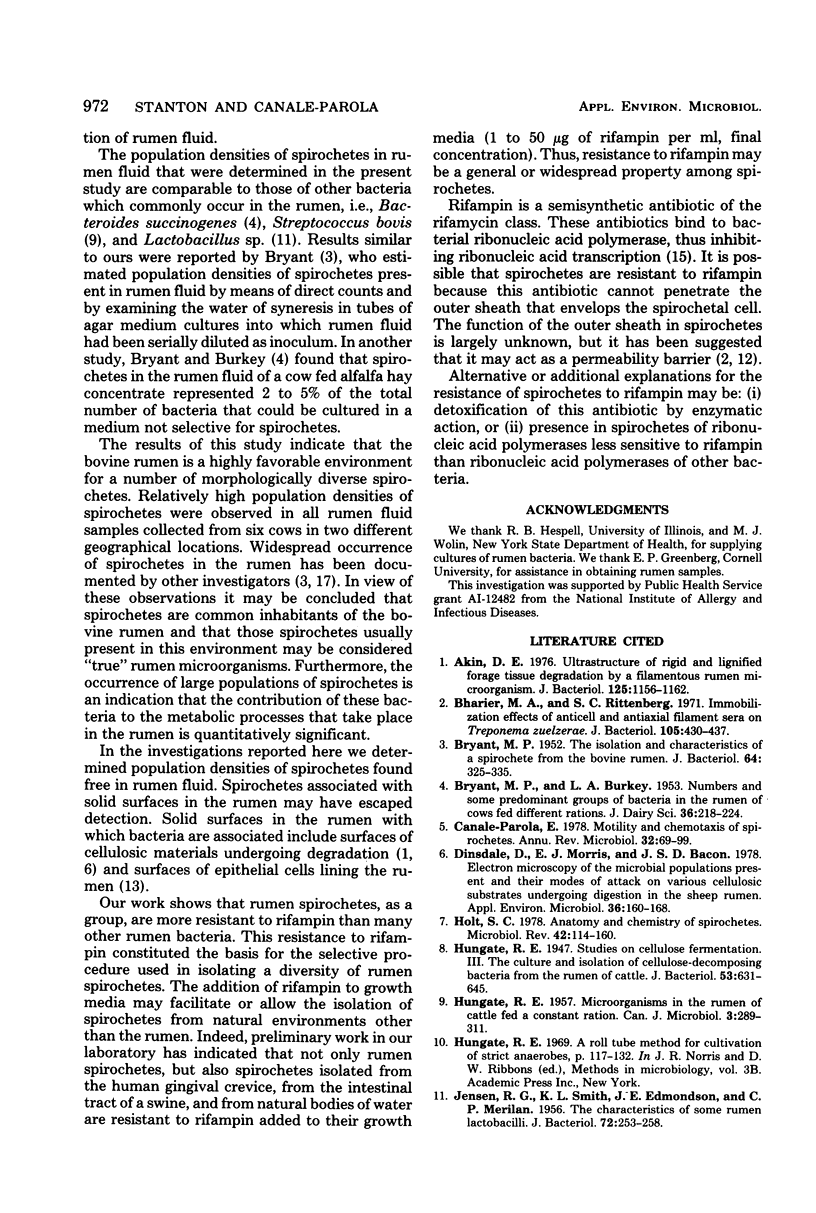
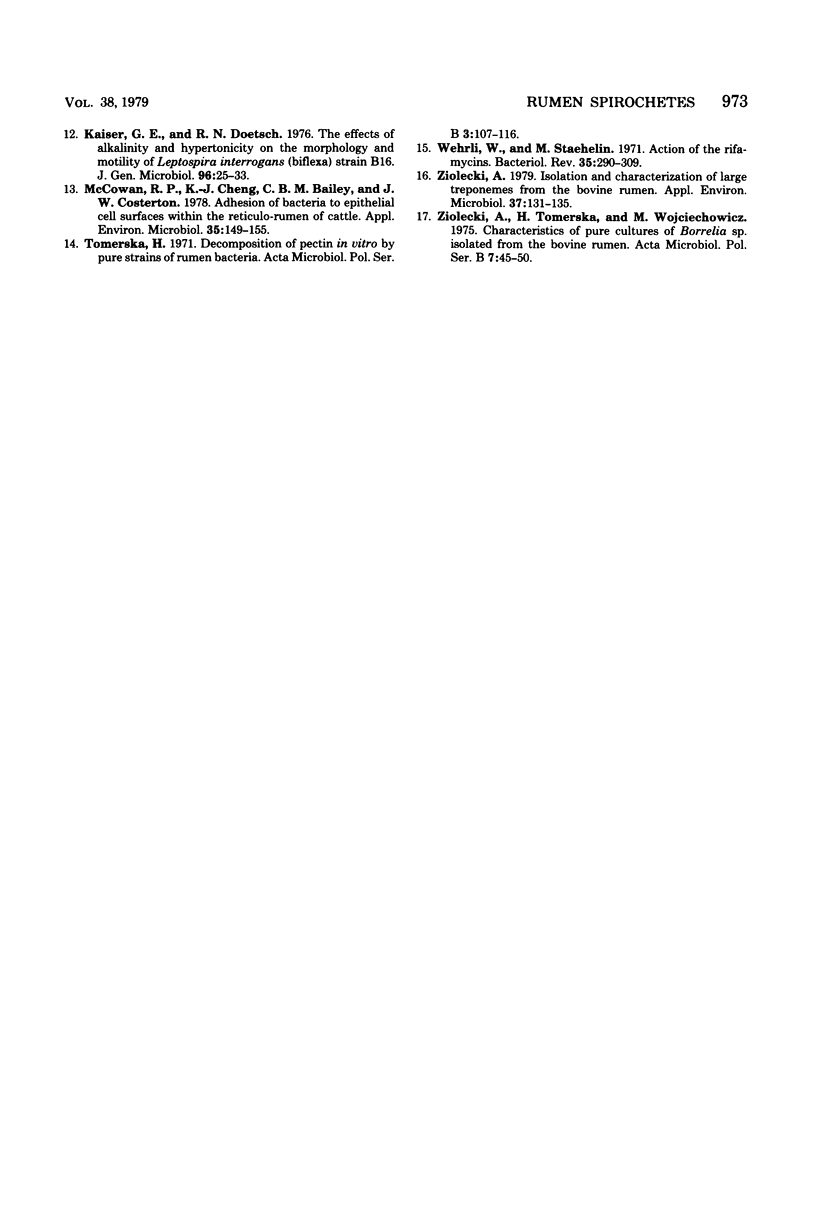
Images in this article
Selected References
These references are in PubMed. This may not be the complete list of references from this article.
- Akin D. E. Ultrastructure of rigid and lignified forage tissue degradation by a filamentous rumen microorganism. J Bacteriol. 1976 Mar;125(3):1156–1162. doi: 10.1128/jb.125.3.1156-1162.1976. [DOI] [PMC free article] [PubMed] [Google Scholar]
- BRYANT M. P. The isolation and characteristics of a spirochete from the bovine rumen. J Bacteriol. 1952 Sep;64(3):325–335. doi: 10.1128/jb.64.3.325-335.1952. [DOI] [PMC free article] [PubMed] [Google Scholar]
- Bharier M. A., Rittenberg S. C. Immobilization effects of anticell and antiaxial filament sera on Treponema zuelzerae. J Bacteriol. 1971 Jan;105(1):430–437. doi: 10.1128/jb.105.1.430-437.1971. [DOI] [PMC free article] [PubMed] [Google Scholar]
- Canale-Parola E. Motility and chemotaxis of spirochetes. Annu Rev Microbiol. 1978;32:69–99. doi: 10.1146/annurev.mi.32.100178.000441. [DOI] [PubMed] [Google Scholar]
- Dinsdale D., Morris E. J., Bacon J. S. Electron microscopy of the microbial populations present and their modes of attack on various cellulosic substrates undergoing digestion in the sheep rumen. Appl Environ Microbiol. 1978 Jul;36(1):160–168. doi: 10.1128/aem.36.1.160-168.1978. [DOI] [PMC free article] [PubMed] [Google Scholar]
- EDMONDSON J. E., JENSEN R. G., MERILAN C. P., SMITH K. L. The characteristics of some rumen lactobacilli. J Bacteriol. 1956 Aug;72(2):253–258. doi: 10.1128/jb.72.2.253-258.1956. [DOI] [PMC free article] [PubMed] [Google Scholar]
- HUNGATE R. E. Microorganisms in the rumen of cattle fed a constant ration. Can J Microbiol. 1957 Mar;3(2):289–311. doi: 10.1139/m57-034. [DOI] [PubMed] [Google Scholar]
- Holt S. C. Anatomy and chemistry of spirochetes. Microbiol Rev. 1978 Mar;42(1):114–160. doi: 10.1128/mr.42.1.114-160.1978. [DOI] [PMC free article] [PubMed] [Google Scholar]
- Hungate R. E. Studies on Cellulose Fermentation: III. The Culture and Isolation for Cellulose-decomposing Bacteria from the Rumen of Cattle. J Bacteriol. 1947 May;53(5):631–645. doi: 10.1128/jb.53.5.631-645.1947. [DOI] [PMC free article] [PubMed] [Google Scholar]
- Kaiser G. E., Doetsch R. N. The effects of alkalinity and hypertonicity on the morphology and motility of Leptospira interrogans (biflexa) strain B16. J Gen Microbiol. 1976 Sep;96(1):25–33. doi: 10.1099/00221287-96-1-25. [DOI] [PubMed] [Google Scholar]
- McCowan R. P., Cheng K. J., Bailey C. B., Costerton J. W. Adhesion of bacteria to epithelial cell surfaces within the reticulo-rumen of cattle. Appl Environ Microbiol. 1978 Jan;35(1):149–155. doi: 10.1128/aem.35.1.149-155.1978. [DOI] [PMC free article] [PubMed] [Google Scholar]
- Tomerska H. Decomposition of pectin in vitro by pure strains of rumen bacteria. Acta Microbiol Pol B. 1971;3(2):107–115. [PubMed] [Google Scholar]
- Wehrli W., Staehelin M. Actions of the rifamycins. Bacteriol Rev. 1971 Sep;35(3):290–309. doi: 10.1128/br.35.3.290-309.1971. [DOI] [PMC free article] [PubMed] [Google Scholar]
- Ziolecki A., Tomerska H., Wojciechowicz M. Characteristics of pure cultures of Borrelia sp. isolated from the bovine rumen. Acta Microbiol Pol B. 1975;7(1):45–50. [PubMed] [Google Scholar]
- Ziołecki A. Isolation and characterization of large treponemes from the bovine rumen. Appl Environ Microbiol. 1979 Jan;37(1):131–135. doi: 10.1128/aem.37.1.131-135.1979. [DOI] [PMC free article] [PubMed] [Google Scholar]



